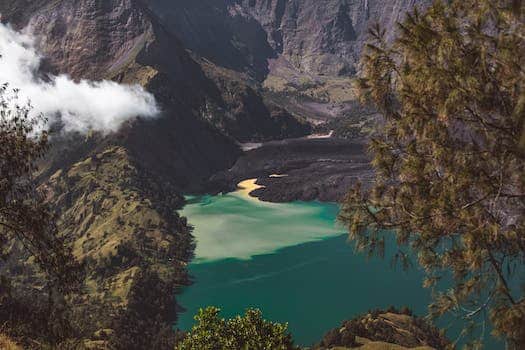Welcome to The Ultimate Eco Tourism Guide: Exploring Sustainable Travel Options. In this comprehensive article, we delve into the fascinating world of eco tourism, showcasing various sustainable travel options that allow us to explore the wonders of our planet while minimizing our environmental impact. Whether you are a nature enthusiast, an adventure seeker, or simply curious about eco-friendly travel, this guide is here to inspire and inform you. So let’s embark on a journey towards responsible and unforgettable experiences in eco tourism!
- 1. What is Eco Tourism?
- 1.1. Definition of Eco Tourism
- 1.2. Importance of Eco Tourism
- 1.3. Principles of Eco Tourism
- 1.4. Benefits of Eco Tourism
- 1.5. Challenges in Eco Tourism
- 2. Top Eco Tourism Destinations
- 2.1. Amazon Rainforest, Brazil
- 2.2. Galapagos Islands, Ecuador
- 2.3. Costa Rica
- 2.4. Norwegian Fjords
- 2.5. Great Barrier Reef, Australia
- 3. Tips for Sustainable Travel
1. What is Eco Tourism?
Eco tourism, also known as ecological tourism, is a form of travel that focuses on visiting natural areas while conserving the environment and improving the well-being of local communities. It promotes responsible travel practices and aims to minimize the negative impact on the environment and culture of the destinations. Eco tourism promotes sustainable development by generating economic benefits for local communities, preserving natural resources, and fostering cultural awareness. This type of tourism often involves activities such as wildlife watching, hiking, camping, and engaging with local communities to learn about their traditions and lifestyles. By choosing eco tourism, travelers can contribute to the protection of fragile ecosystems, support local conservation efforts, and promote sustainable practices in the tourism industry.
1.1. Definition of Eco Tourism
Eco tourism, also known as ecological tourism, is a form of travel that focuses on experiencing and preserving natural environments and promoting sustainability. It involves visiting destinations that have minimal impact on the environment and local communities while providing opportunities for education, conservation, and cultural exchange. Eco tourism is guided by principles such as minimizing carbon footprint, supporting local economies, conserving biodiversity, and respecting the rights and traditions of indigenous communities. The main goal of eco tourism is to create a positive impact on the environment and society, while allowing travelers to immerse themselves in the natural beauty and cultural richness of a destination.
1.2. Importance of Eco Tourism
Eco tourism, also known as ecological tourism, is a form of travel that focuses on visiting natural areas while minimizing the negative impact on the environment and contributing to the conservation of local ecosystems. It promotes responsible travel practices that benefit both the traveler and the destination. Eco tourism is all about immersing oneself in the natural beauty of a place, while actively participating in its preservation and sustainability.
The concept of eco tourism goes beyond simply enjoying nature. It encourages travelers to engage in activities that promote conservation, support local communities, and educate themselves and others about the importance of preserving our planet’s resources. This type of tourism aims to create a positive impact on both the environment and the local communities by generating income, creating jobs, and raising awareness about environmental issues.
Eco tourism offers a unique opportunity for travelers to connect with nature on a deeper level. It allows them to explore pristine landscapes, observe wildlife in their natural habitats, and experience the rich biodiversity of different regions. By choosing eco-friendly accommodations, participating in eco tours, and supporting local businesses that prioritize sustainability, travelers can contribute to the protection of natural areas and the well-being of local communities.
The importance of eco tourism cannot be overstated. It plays a crucial role in conserving natural environments, preserving cultural heritage, and promoting sustainable development. By practicing eco tourism, travelers can help to protect fragile ecosystems, promote biodiversity conservation, and reduce the negative impacts of mass tourism. It also provides economic opportunities for local communities, which can help alleviate poverty and improve living standards.
In conclusion, eco tourism is not just a trend; it is a responsible and sustainable way of traveling. It allows us to appreciate the beauty of nature while actively contributing to its preservation. By choosing eco tourism, we can make a positive difference in the world and ensure that future generations can continue to enjoy the wonders of our planet.
1.3. Principles of Eco Tourism
Eco tourism is a form of travel that focuses on experiencing and appreciating natural environments, while minimizing the negative impact on the environment. It is a responsible and sustainable way of exploring the world, promoting conservation efforts, and supporting local communities. Eco tourism encompasses activities such as wildlife viewing, nature walks, hiking, camping, and visiting protected areas or national parks. The principles of eco tourism revolve around three main pillars: environmental sustainability, social responsibility, and economic viability. These principles guide eco tourists in making conscious choices to ensure their travel experiences are not only enjoyable but also beneficial for the destinations they visit.
1.4. Benefits of Eco Tourism
Eco tourism, also known as ecological tourism, is a form of travel that focuses on experiencing and appreciating nature while minimizing impact on the environment. It aims to promote sustainable practices, conservation of natural resources, and the well-being of local communities. This type of tourism encourages visitors to engage in activities that are environmentally friendly and socially responsible.
One of the benefits of eco tourism is the preservation and protection of natural habitats. By promoting sustainable practices, eco tourism helps to conserve fragile ecosystems, wildlife, and biodiversity. This can include activities such as wildlife watching, nature walks, and visiting protected areas.
Another benefit is the economic support it provides to local communities. Eco tourism often takes place in rural or remote areas where communities may rely on natural resources for their livelihoods. By generating income through sustainable tourism, local residents are incentivized to protect their environment and cultural heritage.
Furthermore, eco tourism offers educational opportunities for both visitors and locals. Travelers can learn about the importance of environmental conservation, cultural traditions, and the challenges faced by local communities. This knowledge can inspire individuals to make more sustainable choices in their daily lives and become advocates for positive change.
In addition, eco tourism can contribute to the overall well-being and health of individuals. Spending time in nature has been shown to reduce stress levels, improve mental health, and enhance physical fitness. By providing opportunities for outdoor activities and connection with natural environments, eco tourism promotes personal well-being.
Overall, eco tourism offers numerous benefits, including the preservation of natural habitats, economic support for local communities, educational opportunities, and personal well-being. By choosing to engage in eco tourism, individuals can contribute to the protection of our planet and create a more sustainable future.
1.5. Challenges in Eco Tourism
Eco tourism, also known as ecological tourism or sustainable tourism, is a form of travel that focuses on visiting natural areas while minimizing the negative impact on the environment and supporting conservation efforts. It is a responsible way of exploring and experiencing the natural wonders of our planet.
However, eco tourism comes with its own set of challenges that need to be addressed in order to ensure its success and effectiveness.
One of the major challenges in eco tourism is striking a balance between tourism development and environmental protection. As the popularity of eco tourism grows, there is a risk of overdevelopment and exploitation of natural resources. It is important to carefully plan and regulate tourism activities to prevent harm to the environment.
Another challenge is the preservation of cultural heritage. Eco tourism often involves visiting remote and indigenous communities, which have their own unique cultural traditions and practices. It is crucial to respect and preserve these traditions while promoting sustainable tourism practices.
Furthermore, the education and awareness of both tourists and local communities play a significant role in the success of eco tourism. Tourists need to be educated about the importance of conservation and responsible travel, while local communities should be empowered to actively participate and benefit from eco tourism initiatives.
Lastly, the economic sustainability of eco tourism is a challenge that needs to be addressed. It is important to ensure that the economic benefits generated from eco tourism are distributed equitably among the local communities, contributing to their socio-economic development.
In conclusion, eco tourism offers a unique opportunity to explore and appreciate the natural and cultural wonders of our world. However, addressing the challenges of eco tourism is essential to ensure its long-term sustainability and positive impact on the environment and local communities.
2. Top Eco Tourism Destinations
Eco tourism has gained immense popularity in recent years, as more and more travelers are seeking sustainable travel options. From pristine natural landscapes to responsible wildlife encounters, there are numerous eco tourism destinations around the world that offer unforgettable experiences while contributing to the preservation of our planet. Here are some of the top eco tourism destinations to consider for your next sustainable travel adventure:
2.1. Amazon Rainforest, Brazil
The Amazon Rainforest in Brazil is one of the top eco tourism destinations in the world. Covering an impressive area of over 5.5 million square kilometers, it is the largest tropical rainforest on the planet. The Amazon Rainforest is not only rich in biodiversity but also plays a crucial role in stabilizing the Earth’s climate. It is often referred to as the ‘lungs of the Earth’ due to its ability to produce approximately 20% of the world’s oxygen.
Exploring the Amazon Rainforest offers visitors a unique opportunity to witness nature at its finest. The region is home to countless species of plants and animals, many of which cannot be found anywhere else on Earth. From vibrant toucans and playful monkeys to majestic jaguars and elusive pink dolphins, the Amazon Rainforest is a true paradise for wildlife enthusiasts.
In addition to its remarkable biodiversity, the Amazon Rainforest is also a cultural treasure trove. Indigenous communities have inhabited the region for thousands of years, preserving their traditional way of life and deep connection with the natural world. Visitors can learn about their customs, traditions, and sustainable practices, gaining a deeper understanding of the importance of protecting this fragile ecosystem.
When visiting the Amazon Rainforest, there are various eco-friendly activities to engage in. Guided hikes allow travelers to explore the forest floor, discovering hidden waterfalls and medicinal plants along the way. Canoeing or kayaking through the winding rivers offers a peaceful and immersive experience, allowing visitors to observe wildlife up close while minimizing their impact on the environment.
Staying in eco lodges or sustainable accommodations is highly recommended for those seeking an authentic and responsible experience. These lodges are designed to blend harmoniously with the surrounding environment, minimizing their ecological footprint. They often provide educational programs and contribute to local conservation efforts, ensuring that tourism benefits both the visitors and the local communities.
Visiting the Amazon Rainforest is not only an incredible adventure but also a chance to contribute to its preservation. By supporting responsible ecotourism practices, travelers can help protect this irreplaceable ecosystem for future generations to enjoy.
2.2. Galapagos Islands, Ecuador
The Galapagos Islands in Ecuador are a must-visit destination for eco-tourists. This pristine archipelago, located in the Pacific Ocean, is renowned for its unique and diverse wildlife. The islands are home to a vast array of species, many of which are found nowhere else on Earth. From giant tortoises and marine iguanas to blue-footed boobies and Galapagos penguins, the Galapagos Islands offer an incredible opportunity to observe and learn about these fascinating creatures in their natural habitat.
What sets the Galapagos Islands apart as an eco-tourism destination is the commitment to conservation and sustainability. Strict regulations and controls have been put in place to protect the fragile ecosystem of the islands. Visitors are required to follow strict guidelines to minimize their impact on the environment, such as staying on designated trails and keeping a safe distance from the wildlife.
Exploring the Galapagos Islands offers a unique chance to witness the wonders of nature while contributing to the preservation of this extraordinary ecosystem. Whether snorkeling with sea turtles, hiking through volcanic landscapes, or simply observing the incredible wildlife, a trip to the Galapagos Islands is a true adventure in sustainable travel.
2.3. Costa Rica
Costa Rica is known for its exceptional eco-tourism opportunities. With its rich biodiversity, stunning landscapes, and commitment to sustainability, it has become a top destination for eco-conscious travelers. Here are some of the top eco-tourism destinations in Costa Rica:
1. Corcovado National Park: Located on the Osa Peninsula, Corcovado National Park is a true paradise for nature lovers. It is home to one of the most biodiverse ecosystems on the planet, with an incredible variety of plant and animal species. Visitors can explore the park’s dense rainforests, hike through its trails, and spot endangered wildlife such as jaguars, tapirs, and scarlet macaws.
2. Monteverde Cloud Forest Reserve: Nestled in the misty mountains of Costa Rica, the Monteverde Cloud Forest Reserve offers a unique eco-tourism experience. This protected area is famous for its lush cloud forests, hanging bridges, and diverse birdlife. Travelers can go on guided hikes, zip line through the canopy, or take a thrilling night tour to spot elusive nocturnal creatures.
3. Tortuguero National Park: Located on the Caribbean coast of Costa Rica, Tortuguero National Park is a haven for sea turtles. It is one of the most important nesting sites for green turtles in the entire Western Hemisphere. Visitors can witness the incredible sight of turtles coming ashore to lay their eggs, as well as explore the park’s network of canals and observe other wildlife such as monkeys, sloths, and caimans.
4. Manuel Antonio National Park: Situated on the Pacific coast, Manuel Antonio National Park is renowned for its stunning beaches, lush rainforests, and abundant wildlife. Travelers can enjoy activities like hiking, swimming, and sunbathing while spotting monkeys, sloths, and a wide variety of bird species. The park also features several well-maintained trails and offers breathtaking views from its viewpoints.
5. Arenal Volcano National Park: Home to the iconic Arenal Volcano, this national park offers a unique blend of adventure and natural beauty. Visitors can hike through lava fields, soak in hot springs, go on canopy tours, and even take a boat ride on Lake Arenal. The volcano itself provides a dramatic backdrop for outdoor activities and offers the opportunity to witness volcanic activity.
These are just a few of the many eco-tourism destinations that Costa Rica has to offer. Whether you’re interested in exploring its rainforests, observing wildlife, or engaging in adventure activities, Costa Rica is a must-visit destination for sustainable travelers.
2.4. Norwegian Fjords
Norwegian Fjords are one of the top eco tourism destinations in the world. These breathtaking natural wonders offer a unique and sustainable travel experience. The fjords, with their majestic mountains, crystal-clear waters, and abundant wildlife, provide an ideal setting for nature enthusiasts. Visitors can explore the fjords by cruising along the deep blue waters or hiking through the surrounding trails. The untouched beauty of the Norwegian Fjords is a testament to the country’s commitment to preserving its natural heritage. As you immerse yourself in the tranquility of these fjords, you can’t help but appreciate the importance of sustainable travel and the need to protect our planet for future generations.
2.5. Great Barrier Reef, Australia
The Great Barrier Reef, located off the coast of Australia, is one of the world’s most popular eco tourism destinations. Spanning over 2,300 kilometers, it is the largest coral reef system in the world. The reef is home to a diverse range of marine life, including over 1,500 species of fish, 600 types of coral, and numerous other marine creatures. Visitors to the Great Barrier Reef can engage in various eco-friendly activities, such as snorkeling, scuba diving, and sailing, to explore its vibrant underwater world. Additionally, there are numerous eco-conscious tour operators and accommodation options available, ensuring that travelers can experience this natural wonder while minimizing their environmental impact. With its breathtaking beauty and ecological significance, the Great Barrier Reef is a must-visit destination for eco-conscious travelers.
3. Tips for Sustainable Travel
Sustainable travel is a growing trend in the tourism industry, as more and more travelers are becoming conscious of their environmental impact. If you’re looking to make your next trip more eco-friendly, here are some tips for sustainable travel:
1. Choose eco-friendly accommodations: Look for hotels, resorts, or guesthouses that have implemented sustainable practices, such as using renewable energy sources, recycling, and reducing water consumption.
2. Pack light: The heavier your luggage, the more fuel is needed to transport it. Pack only the essentials and opt for lightweight and compact travel gear.
3. Use public transportation: Instead of renting a car or taking a taxi, use public transportation whenever possible. Trains, buses, and subways are usually more energy-efficient and produce fewer emissions.
4. Support local businesses: When dining out or shopping, choose locally owned restaurants, markets, and stores. This not only supports the local economy but also reduces the carbon footprint of your purchases.
5. Minimize plastic waste: Bring a reusable water bottle, shopping bag, and toiletry containers. Avoid single-use plastics whenever possible and recycle any plastic waste that you do generate.
6. Respect local cultures and traditions: Learn about the customs and traditions of the destinations you’re visiting and be respectful of them. This includes dressing modestly, asking for permission before taking photos, and respecting wildlife and natural habitats.
7. Conserve energy and water: Turn off lights, air conditioning, and other electronic devices when you leave your accommodation. Take shorter showers and reuse towels to conserve water.
By following these tips, you can make a positive impact on the environment while still enjoying your travel experience. Remember, sustainable travel is not just about reducing your carbon footprint, but also about supporting local communities and preserving cultural heritage.
3.1. Choose Eco-Friendly Accommodations
When it comes to sustainable travel, choosing eco-friendly accommodations is a crucial aspect. By opting for environmentally conscious lodging, you can reduce your carbon footprint and contribute to the preservation of natural resources. Here are some tips to help you make sustainable choices when selecting accommodations for your next eco-tourism adventure:
1. Research eco-certifications: Look for accommodations that have obtained recognized eco-certifications, such as LEED (Leadership in Energy and Environmental Design) or Green Globe. These certifications ensure that the lodging meets specific sustainability criteria.
2. Energy-efficient practices: Seek accommodations that prioritize energy conservation by using renewable energy sources, implementing energy-efficient appliances, and employing smart technologies like motion-sensor lighting.
3. Waste management systems: Choose accommodations that have effective waste management systems in place. Look for properties that recycle, compost, and minimize single-use plastic consumption.
4. Water conservation: Consider staying at accommodations that promote water conservation through measures like low-flow toilets, water-saving showerheads, and rainwater harvesting.
5. Locally sourced and organic food: Support accommodations that prioritize serving locally sourced and organic food options. This not only reduces the carbon footprint associated with food transportation but also supports local farmers and communities.
6. Community engagement: Look for accommodations that actively engage with local communities, support local initiatives, and contribute to the well-being of the surrounding environment.
By following these tips, you can ensure that your choice of accommodations aligns with your commitment to sustainable travel and eco-tourism. Remember, every small step counts when it comes to protecting our planet!
3.2. Support Local Communities
Supporting local communities is an essential aspect of sustainable travel. By engaging with local businesses, buying locally made products, and participating in community activities, travelers can contribute to the economic development and cultural preservation of the destination they are visiting. Here are some tips on how to support local communities during your eco-friendly travels:
1. Choose accommodations and tour operators that are locally owned and operated. This ensures that the majority of the revenue stays within the community, benefiting the local economy.
2. Eat at local restaurants and cafes that serve traditional cuisine. By doing so, you not only support local farmers and food producers but also get to experience the authentic flavors of the region.
3. Buy souvenirs and handicrafts directly from local artisans and craftsmen. This way, you can help sustain traditional craftsmanship and support individual entrepreneurs.
4. Participate in community-based tourism initiatives, such as homestays or volunteering opportunities. This allows you to directly engage with local communities, learn about their way of life, and contribute to their social development.
5. Respect the local culture and traditions by observing and adhering to their customs, etiquette, and dress codes. This shows appreciation for the local way of life and helps preserve their cultural heritage.
By supporting local communities, travelers can make a positive impact on the places they visit, fostering sustainable development and preserving the unique character of each destination.
3.3. Respect Wildlife and Natural Habitats
Respecting wildlife and natural habitats is essential for sustainable travel. As eco-tourists, we have a responsibility to ensure that our presence does not harm the delicate balance of nature. Here are some tips to help you practice sustainable travel when it comes to wildlife and natural habitats:
1. Observe from a distance: When encountering wild animals, it’s important to maintain a respectful distance. Avoid getting too close or disturbing their natural behavior. Use binoculars or a zoom lens to observe them without intruding.
2. Do not feed or touch animals: Feeding wild animals can disrupt their natural diet and dependency on humans. It can also make them reliant on handouts, which can lead to aggressive behavior. Similarly, touching animals can transmit diseases and stress them out. Appreciate them from afar and let them live undisturbed.
3. Stay on designated trails: Stick to marked paths and trails when exploring natural habitats. Straying off the designated routes can trample vegetation, disturb nesting sites, and harm fragile ecosystems. By staying on the trails, you minimize your impact on the environment.
4. Avoid buying products made from wildlife: Be cautious of souvenirs or products made from endangered species or illegally obtained natural resources. Purchasing such items contributes to the illegal wildlife trade and threatens the survival of many species. Choose sustainable alternatives instead.
5. Support local conservation efforts: Look for eco-friendly tour operators and accommodations that actively support local conservation initiatives. By choosing these responsible businesses, you contribute to the preservation of wildlife and their habitats.
Remember, sustainable travel is all about leaving a positive impact on the places we visit. By respecting wildlife and natural habitats, we can ensure a brighter future for our planet’s biodiversity.
3.4. Minimize Waste and Pollution
Minimize Waste and Pollution
One of the key aspects of sustainable travel is minimizing waste and pollution. By adopting eco-friendly practices, travelers can help reduce the negative impact on the environment and contribute to the preservation of natural resources. Here are some tips to minimize waste and pollution during your travel:
1. Bring reusable items: Carry a reusable water bottle, coffee cup, and shopping bag to avoid single-use plastics. This simple step can significantly reduce the amount of plastic waste generated during your trip.
2. Avoid excessive packaging: Choose products with minimal packaging or opt for package-free alternatives whenever possible. By avoiding unnecessary packaging, you can reduce the amount of waste that ends up in landfills.
3. Dispose of waste responsibly: Always dispose of your waste in designated recycling bins or trash cans. Be mindful of the local waste management practices and follow them accordingly.
4. Choose eco-friendly transportation: Opt for public transportation, cycling, or walking whenever feasible. By reducing the use of private vehicles or airplanes, you can minimize carbon emissions and air pollution.
5. Support sustainable accommodations: Look for hotels or accommodations that have implemented sustainable practices such as energy-efficient systems, waste reduction initiatives, and water conservation measures.
By following these tips, you can make a positive impact on the environment while enjoying your travel experience. Remember, every small step counts towards a more sustainable future!
3.5. Educate Yourself and Others
Educating yourself and others about sustainable travel is essential in promoting eco-friendly tourism. By learning about the impact of our travel choices and sharing this knowledge with others, we can contribute to a more sustainable future.
Here are some tips for sustainable travel:
1. Research eco-friendly destinations: Before planning your trip, research destinations that prioritize sustainability. Look for places that have implemented environmentally conscious practices, such as renewable energy use, waste management systems, and conservation efforts.
2. Choose eco-friendly accommodations: Opt for accommodations that have eco-certifications or sustainable practices. Look for hotels or resorts that prioritize energy efficiency, waste reduction, and use of renewable resources.
3. Pack responsibly: When packing for your trip, consider the environmental impact of your choices. Bring reusable water bottles, cloth bags, and eco-friendly toiletries. Avoid single-use plastics and excessive packaging.
4. Support local communities: Engage with local communities and support their sustainable initiatives. Choose local tour operators, restaurants, and shops that promote fair trade, responsible tourism, and local craftsmanship.
5. Respect wildlife and nature: When exploring natural areas, follow the principles of Leave No Trace. Do not disturb wildlife, stick to designated trails, and avoid littering. Respect the natural beauty and biodiversity of the places you visit.
6. Offset your carbon footprint: Consider offsetting the carbon emissions generated from your travel by supporting carbon offset initiatives. This can help neutralize the environmental impact of your trip.
By following these tips, you can make a positive difference in the world of eco-tourism and contribute to the preservation of our planet’s natural wonders.
Conclusion
In conclusion, eco tourism offers a sustainable travel option for those who wish to explore the world while minimizing their environmental impact. By choosing eco-friendly accommodations, engaging in responsible activities, and supporting local communities, travelers can actively contribute to the preservation of natural and cultural resources. With the increasing popularity of eco tourism, it is crucial for both individuals and tourism industry stakeholders to prioritize sustainability and work towards creating a more environmentally conscious travel culture.






10 Comments
Wendye Baily
9 months agoThis is amazing! Ive been looking for a guide like this for ages. Im all about sustainable travel and eco-friendly destinations. Its great to see a comprehensive resource that can help me plan my next eco adventure. Cant wait to explore these amazing places and make a positive impact on the environment. Thanks for sharing this! 🌍✈️
Nani Mazman
9 months agoHey there, fellow Earth lover! 🌍✨ I just stumbled upon this super-duper awesome eco tourism guide and oh boy, am I excited! 🌿💚 Its like a treasure map leading us to the most sustainable travel options and eco-friendly destinations out there. 🌱🌏 Time to pack our bags with recycled undies and bamboo toothbrushes, and embark on the wildest eco adventure of our lives! 🌴🐾 Lets explore this beautiful planet while leaving only footprints and taking only memories. 🌈🏞️ Whos with me? Lets goooo!
Kristy Serafina
9 months agoThank you for sharing this comprehensive eco tourism guide! Its great to see a resource that highlights sustainable travel options and eco-friendly destinations. Planning my next eco adventure has been made much easier with the valuable information provided in this post. Im excited to explore and experience the best sustainable travel options available. Looking forward to embarking on a journey that not only allows me to appreciate the beauty of various destinations but also helps in preserving our planet. Kudos to the author for promoting responsible tourism!
Elbertine Ames
9 months agoThank you for sharing this informative post on sustainable travel options and eco-friendly destinations! As a conscious traveler, I am always on the lookout for ways to minimize my environmental impact while exploring new places. This comprehensive eco tourism guide is exactly what I needed to plan my next eco adventure. I appreciate the effort put into compiling these eco-friendly options, and I cant wait to explore the destinations recommended here. Keep up the great work!
Cherida Nottage
9 months agoThis eco tourism guide is absolutely fantastic! Its an excellent resource for anyone looking to explore sustainable travel options and eco-friendly destinations. I cant wait to plan my next eco adventure using the valuable information provided here. Thank you for sharing such an informative guide!
Muriel Hermon
9 months agoThank you for sharing this informative post on sustainable travel options and eco-friendly destinations. This comprehensive eco-tourism guide is an invaluable resource for those seeking to minimize their environmental impact while experiencing the wonders of the world. It is encouraging to see a growing emphasis on responsible travel practices, and this guide highlights various ways in which we can contribute to preserving our planets natural beauty.
By incorporating eco-friendly practices into our travel plans, we can make a positive difference. From choosing eco-lodges and accommodations that prioritize sustainable practices to engaging in low-impact activities, this guide provides valuable insights on how to minimize our ecological footprint while exploring new destinations.
Moreover, the guide offers a wealth of information on eco-adventures, allowing us to plan our next trip with the environment in mind. Whether its exploring biodiverse national parks, participating in wildlife conservation projects, or engaging in responsible diving and snorkeling activities, there are countless opportunities to immerse ourselves in nature while promoting its preservation.
In todays world, where the importance of sustainable living and responsible tourism is increasingly recognized, this guide serves as a valuable tool for conscious travelers. It not only raises awareness about the significance of eco-friendly travel but also equips us with practical tips and recommendations to ensure that our adventures leave a positive impact on the places we visit.
I look forward to utilizing this comprehensive eco-tourism guide to plan my next eco adventure and contribute to the preservation of our planets natural wonders. Thank you once again for sharing this valuable resource.
Kassi Amr
9 months agoThis post on eco tourism is an absolute gem! It provides a comprehensive guide on sustainable travel options and eco-friendly destinations, which is crucial in todays world where protecting the environment is more important than ever. I truly appreciate the effort put into compiling this valuable information, as it allows us to plan our next adventure with a clear conscience. Taking responsible tourism into consideration not only allows us to enjoy the beauty of nature but also helps in preserving it for future generations. Thank you for shedding light on this crucial aspect of travel and inspiring us to make more environmentally conscious choices.
Krystalle Garlaand
9 months agoThank you for sharing this comprehensive eco tourism guide! Its great to discover the best sustainable travel options and eco-friendly destinations all in one place. Planning my next eco adventure has never been easier. Looking forward to exploring these eco-friendly destinations and contributing to a more sustainable future!
Jolene Dilly
9 months agoAs a normal human visitor, I find this post on sustainable travel options and eco-friendly destinations quite intriguing. It is evident that the guide aims to provide a comprehensive overview of eco tourism, allowing readers to plan their next eco adventure with minimal environmental impact. By promoting sustainable practices in the tourism industry, such as reducing carbon footprint and supporting local communities, this guide aligns with the principles of conservation and environmental responsibility. I appreciate the emphasis on eco-friendly destinations, which undoubtedly play a pivotal role in preserving biodiversity and natural ecosystems. Overall, this scientific approach towards eco tourism showcases the importance of sustainable travel and encourages individuals to make conscious choices for a greener future.
Carlen Idolla
9 months agoThank you for sharing this informative post on sustainable travel options and eco-friendly destinations. I appreciate the comprehensive eco tourism guide provided, which will undoubtedly assist me in planning my next eco adventure. It is crucial to prioritize responsible and environmentally conscious practices while exploring the world, and this resource seems to offer a wealth of valuable information to support that. I look forward to exploring the recommendations and incorporating sustainable choices into my future travel plans.